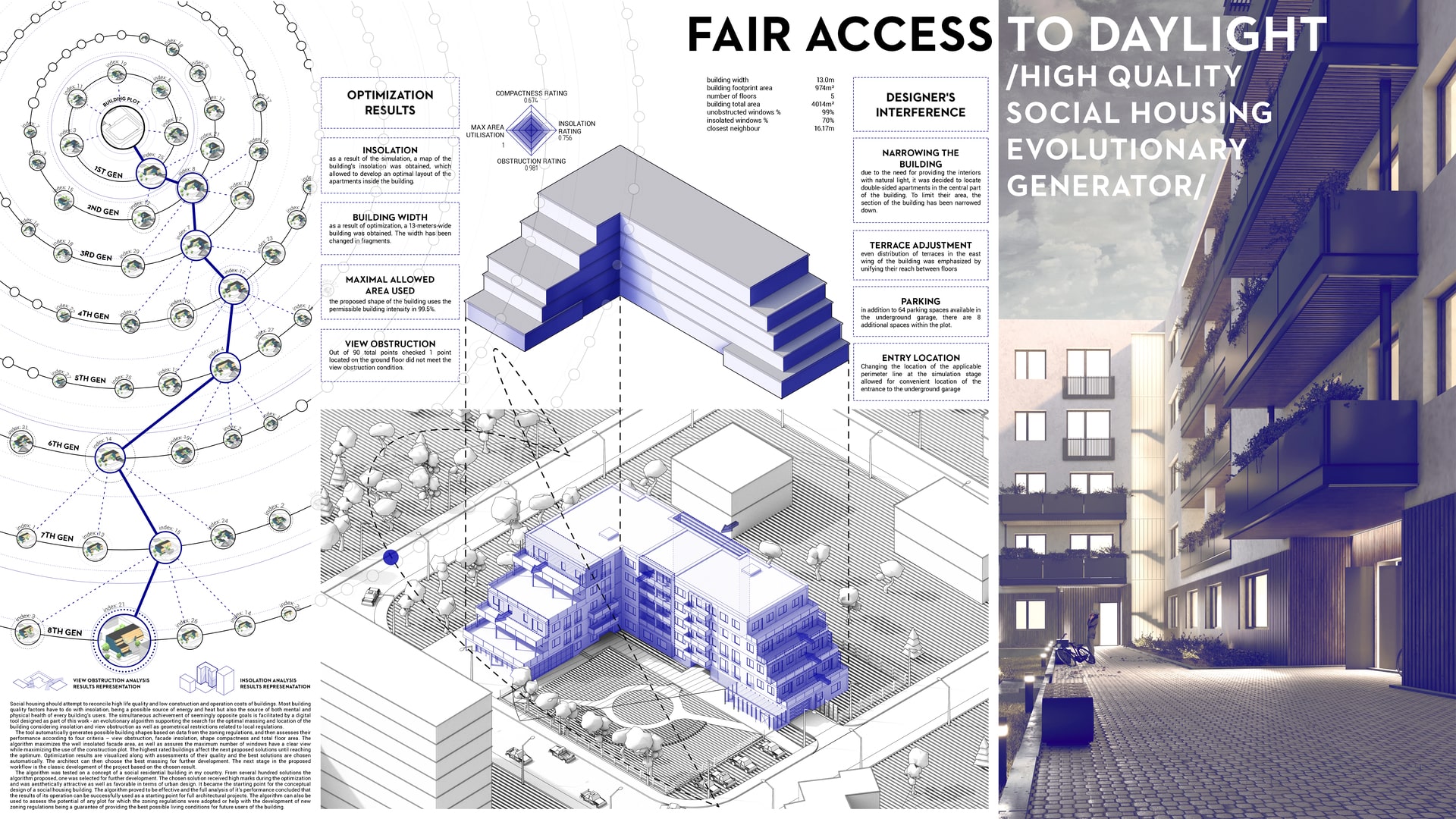Project Description
(IN)ACCESSIBLE HOUSING and why I’m concerned with social housing Socio-economic changes contribute to the accelerated growth of urban population, which is associated with the increasing problem of the availability of housing. Despite actions undertaken by the governments, the lack of housing or poor housing conditions are still among the biggest yet also amongst those most neglected problems we - as a society - are facing. One of the answers to the problem of housing availability is social housing. It is in most cases government-funded and therefore should particularly fulfill low construction and operation costs of buildings conditions yet maintaining the high life quality. Social dwellings are also unique investments, because they concern a special group of future users who are not investors in the project, so they are not able to fight to adapt the buildings to their needs. Considering that social settlements are intended, among others, for seniors, families with many children, the sick and the disabled, the quality of the space they offer is particularly important. Daylight access has a positive effect on both physical and mental health of building users and providing fair daylight access should be treated as a priority especially in social housing. Optimizing the lighting conditions of the building also allows for sustainable energy management (preventing overheating in summer, and providing natural heating in winter), and thanks to wise location of the building on the plot in many cases it may be possible to obtain energy from alternative energy sources, which - apart from economic considerations - has a positive effect on environmental impact of the building. QUALITY AND PRICE seeking a compromise The presented work is an attempt to answer the question of how to preserve the high quality of residential architecture and the lowest possible construction and operating costs. To address this problem, I have created a digital tool - an algorithm that supports the search for the most rational shape and location of the building on the plot by striving to obtain a building of the highest quality and best lighting conditions while maximizing the use of the construction plot within the applicable technical conditions, building regulations and local spatial planning regulations. The algorithm works in three stages. The algorithm in the first stage accepts input data from: - plot location and geometry - neighbourhood - country building code - zoning regulations - the design assumptions determined by the architect - the plot geometry itself. In the second stage, based on the data previously established by the architect, the algorithm looks for the best form and location of the building. The algorithm during its operation, if only possible, maximizes the total area of
